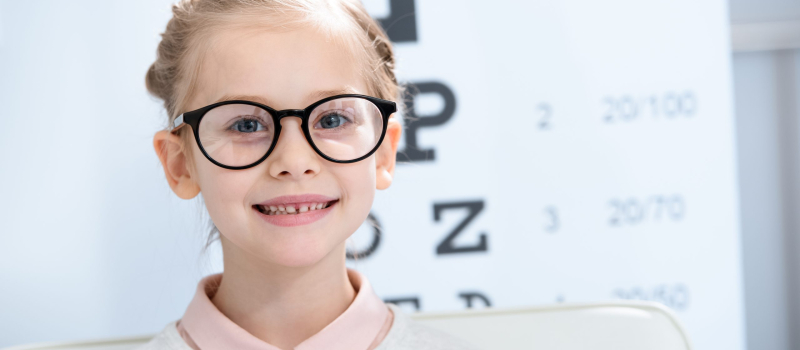Every year, as kids get ready to go back to school, there’s a long list of things to check off. New school supplies, clothes, and preparing for the new schedule are all part of the routine. But an important task that often gets overlooked is scheduling an eye exam. Making sure your child can see well is crucial for their success in school and their overall well-being. Vision problems can be tricky because kids might not realize they see differently than others. If a child has trouble seeing the board, reading books, or focusing on their homework, it can make learning much harder. This can also affect their confidence and participation in class. A simple eye exam can identify any issues and ensure that your child has the visual tools they need to succeed in school. Think of an eye exam as part of getting ready for a new school year. Just like you wouldn’t send your child to school without the right supplies, you shouldn’t send them without making sure they can see well. It’s a small step that can make a big difference in their education and daily life. An eye exam can catch problems early, helping your child do their best academically and socially. Eye exams are crucial for school success. Clear vision is necessary for reading, writing, and seeing the board. If a child can’t see well, it affects their ability to learn. Eye exams catch problems early, allowing for quick corrections. This makes it easy for kids to follow lessons and do their homework. Kids often don’t know they have vision issues. They might think everyone sees the way they do. Regular eye exams help find these problems. An eye doctor can spot issues that aren’t obvious, like slight differences in vision between each eye, which can cause bigger problems later. Here are some reasons why eye exams are important for school: By ensuring your child’s vision is good before the school year, you set them up for success. They can focus on learning without struggling to see. Eye exams offer many benefits for kids. They help catch vision problems early, which can make school and daily life easier. These exams also give you peace of mind, knowing your child’s eyes are healthy. Here are some key benefits of eye exams for children: Routine eye exams offer a simple way to keep your child healthy and happy. They ensure that small vision problems don’t turn into big issues. This means your child can enjoy school, sports, and play without any vision-related worries. There are several vision problems that can affect school-aged kids. Knowing these can help you understand what to look out for and why eye exams are crucial. Recognizing these common issues can help parents understand why regular eye exams are vital. Catching these problems early can make a significant difference in a child’s ability to learn and interact with the world around them. Taking your child for an eye exam might seem daunting, but it’s actually a simple process. Knowing what to expect can make the experience smoother for both you and your child. Knowing what happens during an eye exam can help ease any anxiety you or your child may have. It’s a straightforward process that plays a big role in ensuring your child’s vision is in top shape for school. Getting ready for a new school year involves more than just new notebooks and backpacks. Ensuring your child has a thorough eye exam is a critical step in preparing them for success. Clear vision is essential for learning, playing, and engaging fully in all school activities. Regular eye exams can catch vision problems early on, helping to prevent bigger issues and making school a much more positive experience for your child. An eye exam offers many benefits. It can improve your child’s ability to learn, boost their confidence, and ensure their overall eye health. By understanding the common vision problems that can affect children and knowing what to expect during an eye exam, you can help your child get the most out of their education and daily life. If you haven’t scheduled an eye exam in Bend, OR for your child yet, consider doing it before the school year is too far underway. At Lifetime Vision Care we are home of the best eye doctors in Bend and are committed to ensuring your child sees clearly and comfortably. Schedule an appointment with us today to give your child the visual advantage they need for a successful school year! Do you have questions Contact Us Today!
The Importance of Back to School Eye Exams
Why Eye Exams Are Important for School
Benefits of Eye Exams for Children
Common Vision Problems in School-Aged Kids
What to Expect During an Eye Exam for Kids

